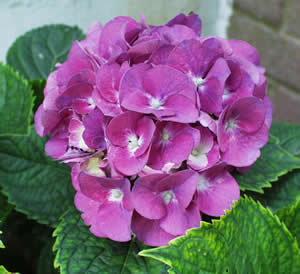Latin Lessons in the Garden
 Latin isn’t dead – at least not in the garden. While many plants are more famously known by their common names, you can’t be guaranteed that a “buttercup” to you is the same as a “buttercup” to someone in England, or France, or China. While some of the Latin names for plants may seem a bit overdone and with the purpose of twisting the tongue, this universal naming system can be very informative and helpful when making choices for your garden.
Latin isn’t dead – at least not in the garden. While many plants are more famously known by their common names, you can’t be guaranteed that a “buttercup” to you is the same as a “buttercup” to someone in England, or France, or China. While some of the Latin names for plants may seem a bit overdone and with the purpose of twisting the tongue, this universal naming system can be very informative and helpful when making choices for your garden.
Being the language of science, Latin was the natural choice for Linnaeus, who devised the system for naming plants in 1753. Though he did first group plants by their relationships to each other, forming families, he then named them according to their genus, the Latin word for “kind” or “type”, and species. The genus of a plant is its proper name and is always capitalized, whereas the species acts as an adjective, describing a specific plant in the genus. While all Hydrangea plants will have the genus “Hydrangea”, the species will tell you what type of Hydrangea it is, “macrophylla” (large leaved – mophead) or “serrata” (saw shaped – lacecap).
Breaking It Down
| If it begins with . . . | If it ends with . . . |
| argo- | white | -anthus | flowered |
| atro- | dark | -ascens | becoming |
| macro- | large, long | -bundus | capacity for |
| salici – | willow-like | -folius | leaved |
| xero – | dry | -phorus | carrying, bearing |
| xylo – | woody | -thamnus | shrub-like |
Sometimes the species will indicate personality traits such as agetus – “wonderful”, decipiens – “deceptive”, impudicus – “lewd, shameless”, or tristis – “dull, sad appearance”. Other times color is indicated: lacteus – “milky white”, pullus – “raven black”, erubescens – “turning red”, sanguineus – “blood red”, caesius – “lavender”, subcaeruleus – “slightly blue”, and virescens – “light green”.
| Markings and shapes . . . | Texture and size . . . |
| maculatus | spotted | asper | rough |
| marmoratus | marbled | barbatus | bearded |
| occellatus | eye-like | ferox | very prickly |
| calceolatus | slipper-shaped | elatus | very tall |
| cornutus | horned | humilis | low-growing |
| stellatus | star-shaped | pumilis | dwarf, small |
For all of this and more, consult your local county extension office or “A Gardener’s Latin”, by Richard Bird.






